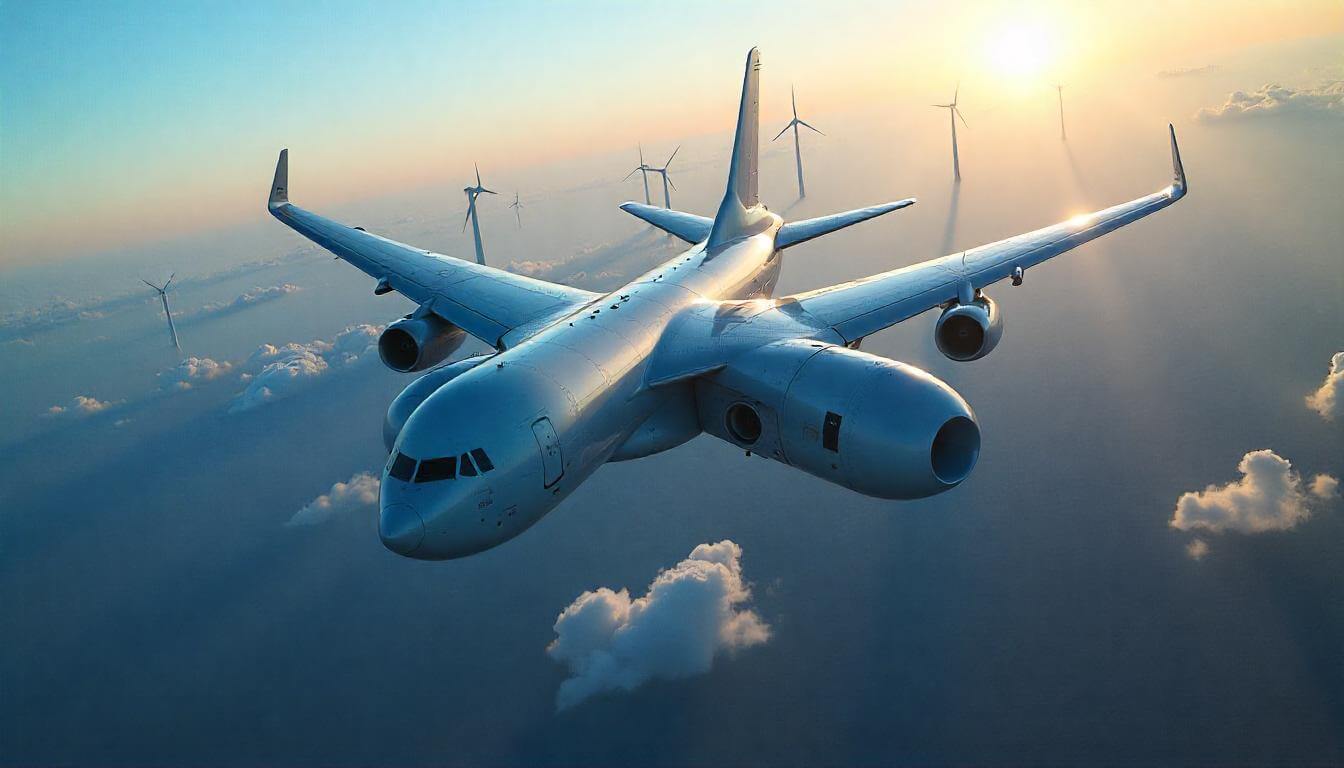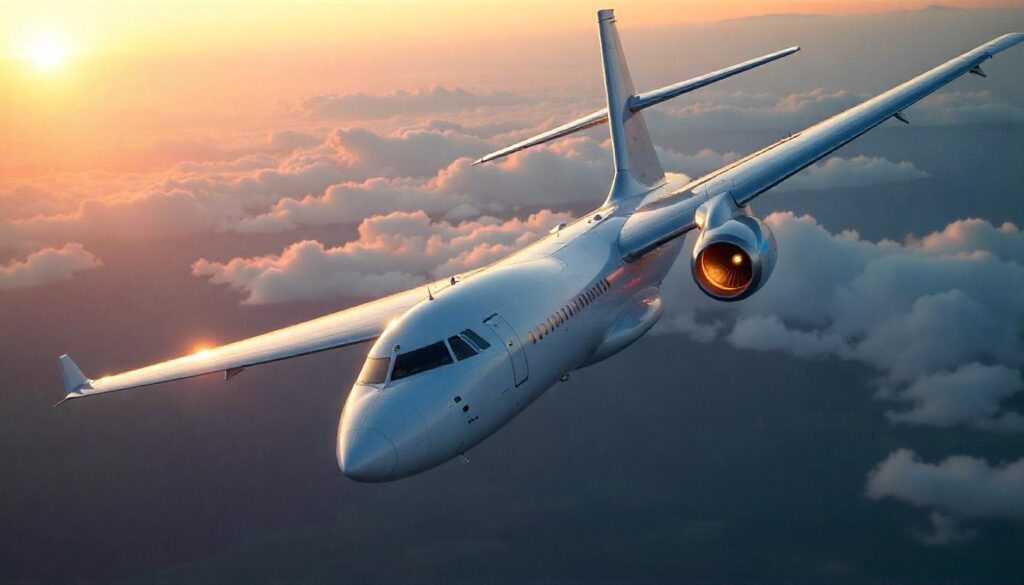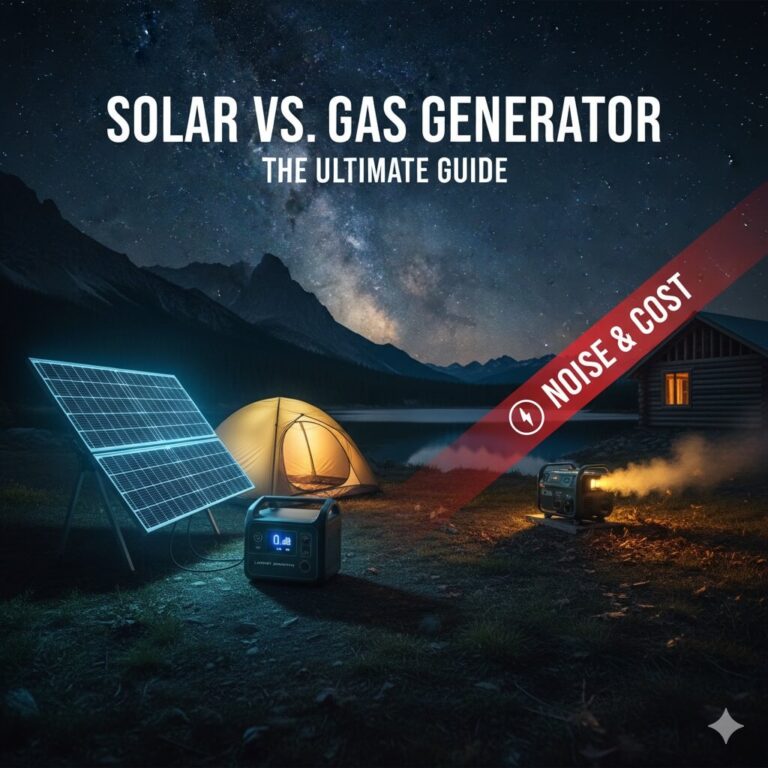The Dual-Purpose Giant: Exploring WindRunner’s Role in Both Green Energy and Defense Logistics

Imagine an aircraft so vast it rivals the length of three commercial airliners, designed not just for passengers or typical cargo, but to carry the colossal blades of modern wind turbines. This is the WindRunner megaplane, a revolutionary concept from Radia, poised to redefine logistics for the green energy sector. Yet, its story doesn’t end there. Beyond its primary mission, this colossal design holds surprising potential as a dual-purpose aircraft, offering transformative capabilities for defense logistics and strategic transport.
The WindRunner is more than just an engineering marvel; it represents a new frontier where innovative solutions for climate challenges can inadvertently, or intentionally, bolster national security. This article will delve into the WindRunner’s initial green energy purpose, unpack the concept of dual-use technology, explore its compelling appeal to defense sectors, examine the powerful synergies this creates, address the inherent challenges of such a hybrid role, and finally, look at its broader implications for the future of global logistics and resilience.
- 1. The WindRunner’s Primary Purpose: Accelerating Green Energy Deployment
- 2. Decoding Dual-Use: A Strategic Advantage for Innovation
- 3. Bridging the Gap: WindRunner’s Unmatched Potential in Defense Logistics
- 4. A Synergy of Strength: Shared Benefits of a Dual-Purpose Megaplane
- 5. Navigating the Intersection: Challenges and Considerations for Dual-Use Aircraft
- 6. The Future of Strategic Transport: Beyond Traditional Boundaries
- Conclusion: A New Era of Resilience, Powered by a Giant
- Frequently Asked Questions (FAQs) About the WindRunner’s Dual Purpose
- Q1: What is the primary purpose of the WindRunner megaplane?
- Q2: How large is the WindRunner, and what makes it unique for cargo transport?
- Q3: What does “dual-use aircraft” mean in the context of the WindRunner?
- Q4: Why is the US Department of Defense interested in the WindRunner?
- Q5: What are some of the main challenges in developing and operating a dual-purpose aircraft like the WindRunner?
1. The WindRunner’s Primary Purpose: Accelerating Green Energy Deployment
The global push for renewable energy hinges significantly on wind power, but scaling up wind farms, especially onshore, faces a formidable foe: logistics. Modern wind turbines are becoming increasingly massive to capture more energy efficiently. Their blades can now stretch over 100 meters (around 330 feet) in length. Transporting these gargantuan components by road or rail is a monumental challenge, often requiring complex routes, costly infrastructure modifications, and limiting turbine deployment to areas with adequate transport access.
This is where the WindRunner megaplane steps in. Designed by Radia, this colossal aircraft is specifically engineered to overcome these logistical bottlenecks. Its staggering specifications speak volumes:
- Length: 356 feet (108 meters), making it longer than three Airbus A320s.
- Wingspan: 261 feet (80 meters).
- Cargo Bay Volume: An astonishing 290,000 cubic feet (8,200 cubic meters), specifically designed to accommodate ultra-long payloads like turbine blades up to 105 meters.
- Operational Flexibility: Crucially, it’s designed to operate from semi-prepared airstrips as short as 6,000 feet (1,800 meters), allowing direct delivery to remote or undeveloped wind farm sites.
By enabling the direct and efficient delivery of these immense components, the WindRunner can dramatically accelerate onshore wind expansion. This means larger, more efficient turbines can be deployed in optimal, wind-rich locations previously deemed inaccessible, significantly boosting energy output and driving down the cost of renewable energy. This capability is pivotal for meeting ambitious global clean energy targets, with the International Energy Agency (IEA) projecting land-based wind energy could provide up to 40% of global energy production by 2050.
2. Decoding Dual-Use: A Strategic Advantage for Innovation
The concept of “dual-use technology” is a powerful one, describing innovations developed primarily for one purpose that find significant, often unexpected, applications in another, typically across civilian and military sectors.
- Definition: A technology or system initially designed for commercial or non-military applications that also possesses inherent capabilities beneficial for defense, security, or military operations.
- Why It’s Valuable:
- Cost Efficiency: Shared research and development (R&D) costs, manufacturing processes, and even maintenance infrastructure can lead to substantial financial savings compared to building separate, single-purpose solutions.
- Accelerated Innovation: The diverse demands and insights from both civilian and military applications can drive faster, more robust technological advancements.
- Enhanced Resilience: Investing in a single platform that serves multiple critical national interests—such as energy security and national defense—builds deeper strategic resilience.
- Broader Investment Appeal: The potential for both commercial viability and government interest can de-risk substantial capital investments required for large-scale projects like the WindRunner.
- Historical Context: Many familiar technologies are prime examples: GPS (originally military, now ubiquitous), the internet (ARPANET), and various drone technologies, which have evolved from military origins to widespread civilian use. The WindRunner flips this script, originating from commercial green energy needs with potential military utility.
3. Bridging the Gap: WindRunner’s Unmatched Potential in Defense Logistics
While its initial design brief was purely for green energy logistics, the WindRunner’s colossal dimensions and unique operational capabilities have attracted significant attention from military strategists, particularly for defense logistics.
- Current Military Airlift Limitations: Existing large military transport aircraft, such as the C-17 Globemaster III and the C-5 Galaxy, are workhorses, but they have inherent dimensional limitations. They struggle with truly “outsize” cargo—items that are exceptionally long or voluminous, even if not extraordinarily heavy.
- The Need for “Outsize” Capability: Future military operations and rapid response scenarios require the ability to transport:
- Next-generation long-range precision munitions or hypersonic missiles that might exceed current cargo bay length limits when fully assembled.
- Large Unmanned Aerial Systems (UAS/drones) that are more efficiently transported fully assembled rather than requiring complex field assembly.
- Specialized, oversized ground vehicles, modular command centers, or rapid construction components for immediate deployment in austere environments.
- Massive humanitarian aid or disaster relief equipment (e.g., temporary hospitals, heavy earth-moving machinery) to areas with destroyed ports or roads.
- WindRunner’s Unique Fit: The megaplane’s unparalleled cargo bay length and volume, combined with its ability to land on shorter, less prepared runways, directly addresses these critical defense logistics gaps, offering a new paradigm for strategic transport.
- Confirmed Interest: The US Department of Defense (DoD) has publicly expressed interest in the WindRunner’s capabilities, underscoring a recognized need for a platform of its kind within military airlift strategy.

4. A Synergy of Strength: Shared Benefits of a Dual-Purpose Megaplane
The convergence of green energy and defense applications within a single platform like the WindRunner creates a powerful synergy that extends beyond mere shared costs:
- Enhanced National Security & Energy Security: The WindRunner simultaneously strengthens two critical pillars of national well-being. By accelerating domestic renewable energy deployment, it reduces reliance on volatile fossil fuel markets, enhancing energy security. Concurrently, its defense utility bolsters strategic readiness and global force projection.
- Economic & Operational Resilience: A robust domestic capability for transporting massive wind components contributes to economic stability and job creation within the renewable energy sector. Meanwhile, its diverse logistical options enhance national supply chain resilience in times of crisis, whether natural disaster or military contingency.
- Investment & Development Justification: The dual-purpose nature provides a more compelling business case, potentially attracting a broader spectrum of investment—both private commercial capital and potential government support—thereby de-risking the enormous development costs associated with such a novel aircraft.
- Potential for Shared Infrastructure: The long-term vision could include possibilities for shared maintenance facilities, pilot training programs, and spare parts inventories, leading to further economies of scale and operational efficiencies across both sectors.
- Innovation Ecosystem: The unique demands from both the commercial green energy industry and the military sector can collectively drive faster innovation in areas like advanced materials, propulsion systems, and autonomous flight technologies.
5. Navigating the Intersection: Challenges and Considerations for Dual-Use Aircraft
While the benefits are compelling, realizing the full dual-purpose potential of the WindRunner involves navigating significant complexities:
- Design Trade-offs: Optimizing the aircraft’s design for both very long, relatively light wind blades and potentially very heavy, dense military cargo requires intricate engineering compromises. Balancing these diverse requirements is a major technical challenge.
- Security & Operational Environment: Operating a commercially designed aircraft in potentially hostile or sensitive military environments would necessitate extensive security adaptations, robust cybersecurity measures, and specialized operational protocols.
- Regulatory & Certification Complexities: The WindRunner would need to navigate the stringent regulatory frameworks of both civilian aviation authorities (like the FAA or EASA) for commercial cargo and potentially distinct military airworthiness certifications and operational rules.
- Funding & Procurement Models: Establishing clear and effective funding mechanisms that blend private commercial investment with potential government procurement or subsidies can be intricate. This requires close collaboration between industry and government.
- Public Perception & Ethics: Balancing the image of an aircraft central to green energy with its potential military use requires careful management of public perception, addressing any concerns about ethical considerations or the perception of “greenwashing” of defense spending.
- Logistical Complexity: Managing scheduling and resource allocation for two distinct operational profiles—time-sensitive commercial renewable energy deployments versus rapid military responses—presents a unique logistical challenge.
6. The Future of Strategic Transport: Beyond Traditional Boundaries
The WindRunner megaplane, with its audacious scale and dual-purpose potential, signifies a profound shift in how we approach strategic transport.
- Catalyst for Innovation: It could pave the way for other multi-purpose, large-scale transport solutions that blur the lines between traditional civilian and military applications, fostering cross-sector innovation.
- Shifting Strategic Priorities: The increasing global imperative for accelerated decarbonization and the enduring need for enhanced defense readiness are converging. Platforms like the WindRunner demonstrate how these seemingly disparate goals can be met through integrated solutions.
- Global Reach & Responsiveness: Imagine the rapid deployment of disaster relief, vital infrastructure components, or critical defense assets anywhere on the globe, unconstrained by conventional logistics. This dramatically enhances global response capabilities.
- Paradigm Shift in Logistics: This aircraft represents a shift from merely adapting existing transport methods to designing purpose-built solutions for the complex, multifaceted logistical needs of the 21st century.
Conclusion: A New Era of Resilience, Powered by a Giant
The WindRunner megaplane stands as a testament to audacious engineering and visionary thinking. It is poised not only to revolutionize green energy deployment by solving the acute logistical challenges of wind turbine transport but also to offer unprecedented capabilities for defense logistics. This makes it a prime example of a truly dual-use aircraft that can deliver immense strategic transport advantages.
The WindRunner embodies the powerful convergence of environmental sustainability and national security, creating a synergy that builds resilience on multiple fronts. It challenges traditional mindsets, demonstrating how climate solutions can contribute to broader strategic goals, fostering a compelling win-win scenario for nations.
We encourage aerospace innovators, green energy investors, and defense logistics strategists to recognize and support the continued development and deployment of such transformative, multi-faceted platforms. The future calls for solutions that are as integrated and innovative as the complex challenges we face, securing both our planet and our prosperity.
Frequently Asked Questions (FAQs) About the WindRunner’s Dual Purpose
Q1: What is the primary purpose of the WindRunner megaplane?
A: The WindRunner’s primary purpose is to transport ultra-long wind turbine blades and other oversized components directly to wind farm sites, overcoming the logistical challenges of road and rail transport for large-scale renewable energy projects.
Q2: How large is the WindRunner, and what makes it unique for cargo transport?
A: The WindRunner is colossal, measuring 356 feet (108 meters) in length (like three Airbus A320s) with a cargo bay designed to carry payloads up to 105 meters long. Its unique feature is its ability to operate from semi-prepared airstrips, allowing direct delivery to remote locations.
Q3: What does “dual-use aircraft” mean in the context of the WindRunner?
A: “Dual-use aircraft” means the WindRunner, while primarily designed for commercial green energy logistics, also possesses significant capabilities for military or defense applications, such as transporting oversized military equipment or humanitarian aid to austere environments.
Q4: Why is the US Department of Defense interested in the WindRunner?
A: The US DoD is interested in the WindRunner due to its unparalleled ability to transport “outsize” cargo (exceptionally long or voluminous items like future missiles or large drones) that exceeds the capacity of current military transport aircraft, enabling rapid deployment to remote locations.
Q5: What are some of the main challenges in developing and operating a dual-purpose aircraft like the WindRunner?
A: Challenges include balancing design compromises for diverse cargo types, navigating complex civilian and military regulatory frameworks, ensuring security in varied operational environments, establishing effective funding models, and managing public perception of its dual role.



